Mandi Ehman's Blog, page 29
February 3, 2015
“Love is a Verb” {and that’s not just a song title}
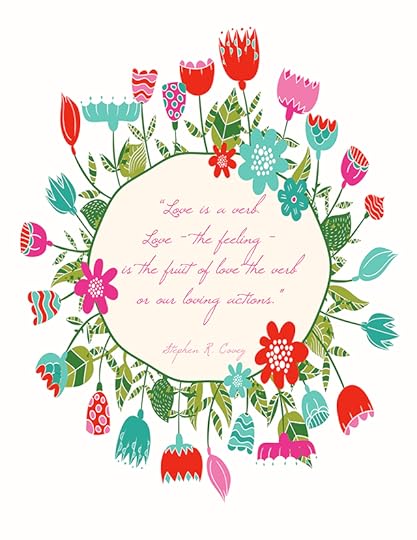
“Love is a verb. Love—the feeling—is the fruit of love the verb or our loving actions.” —Stephen R. Covey
This month we’re talking lovvvvvvve on our 12-month journey to creating a life you love (it’s not too late to join us!), and that includes loving ourselves as well as the people around us.
Whether you’re talking about loving yourself—and therefore taking care of yourself—or loving those closest to you, love requires action. Without action, saying you love someone is just an empty phrase.
The flip side of this is that we can actually act our way into the feeling. In the quote above, Stephen Covey isn’t saying, “If you show someone love, then they’ll love you”; he’s saying, “If you show someone love, you won’t be able to help but feel love for them too.”
When we act lovingly, the feelings follow. That’s good news in a difficult relationship, whether it’s with a sibling, a neighbor or your adolescent.
Do you agree or disagree?

“Love is a Verb” {and that’s not just a song title}
© 2010-2015 Purple Martin Press, LLC | All rights reserved



Working toward my personal goals in 2015 {January review}

During my personal retreat (I know, I know, enough about it already…except it’s had some pretty far reaching effects, so I don’t know how to share those without mentioning it!), I worked through Michael Hyatt’s 5 Days to Your Best Year Ever. Some of the workshop ended up not being extremely relevant for the personal goals I’ve set (because I don’t want these goals to necessarily be measurable, time-sensitive projects that I check off but rather long-lasting life changes), but I did glean a few really important insights.
One of the biggest was confirmation that I need to be regularly reviewing my values and goals. For me, that means a written evaluation monthly and a mental evaluation as I’m planning each new week. My experience over the last few weeks has already shown that review reignites my vision, reminds me to continue pursuing my goals, and prevents me from ignoring the important for the urgent.
The other big takeaway I got from the course was to consider and write down the reasons why I’ve set each goal and then to make an emotional connection with each one. I thought this was a little silly at first, but it’s actually made a big difference in really solidifying those goals in my mind.
In the end, I grouped my personal goals into 10 main categories and then took the time to think about why each one was important—not just why it’s important in general, but why it’s important to me. I’ve listed each “group” below with the reasoning behind the goal as well as the progress I did—or didn’t—make in January and how I’ll be approaching them in February.
1. Lose 15 pounds, make better food choices, drink more water, and walk daily.
WHY: I feel better when I’m healthy, I want to model good habits for my kids, these represent areas of self-control.
Of all of the categories on this list, I feel like this may be one of the ones that takes the most practice before these activities become habits. (Followed closely by being present and not yelling.) I have gotten better about drinking water again…as long as we’re home. I’ve walked a fair amount given the cold and snow we’ve gotten, and I’ve lost about half of the weight I gained last year. But food choices are still a struggle (why can’t I just eat bread all day every day?!), and I have to remind myself to make better choices every single day.
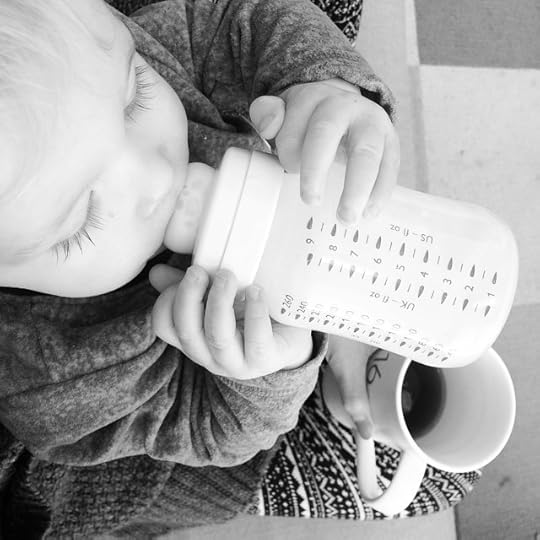
2. Get more sleep and schedule rest.
WHY: I’m more patient, creative and productive when I make time for rest and get enough sleep.
Unfortunately, some of my sleep habits are at the mercy of a baby boy who still struggles with restlessness some nights. But I am heading to bed by 9pm most nights—my goal is actually to get there by 8 and read for an hour before going to sleep…because I am an old lady in a 32-year-old’s body—which has made getting up by 5am so much easier and helped my energy and patience to last much longer during each day.
3. Read aloud, play games, do Kindergarten with Sidney, and make time for special activities.
WHY: I want to build strong relationships with the girls now, fill their tanks and inspire a love of family, reading and learning in them.
We’re at the “toddler in the middle of anything we try to do” stage of life, and between that and the snow we got last month (which the girls want to play in all day long), we haven’t played games as much as I hoped (although it is on my radar, which I feel like is half the battle). The same unfortunately goes for reading aloud, because I’m hesitant to tell the girls they can’t go outside and play until we read when they already read a ton and listen to stories constantly on Audible. I have, however, been super consistent about both kindergarten and piano practice with Sidney. We still haven’t found the illusive time for extra activities, but I’m intentionally sidelining that goal for now as we work to get other routines in place, and then we’ll revisit it.
4. Celebrate minor holidays and birthdays.
WHY: I want to embrace and celebrate every day, create traditions and encourage a spirit of joy in our home.
We just got all of our Christmas decorations put away this weekend, which has made it hard to focus on other upcoming holidays; however, we did have our (now) annual family Superbowl party and sleepover, and we’ll be decorating for Valentine’s Day this week as well. I need to intentionally focus on this goal because it’s not one I want to put off for later, and it really doesn’t take much time or energy as long as I’m thinking about it ahead of time!
5. Schedule coffee and play dates monthly.
WHY: To connect with and build strong relationships within our community for me and the girls, as well as for mentorship and encouragement.
I’ll be honest that this category is the hardest for me to prioritize. It’s not that I don’t value the relationships in our lives (I do!) or know the benefit of connecting with people; it’s just that this one affects so many other areas…it affects our homeschool and office hours, the time I have available for creating and reading, the amount of sleep I get, and so on. As an introvert, it’s much easier for me to prioritize those individual activities over connecting with other people.
The other challenge I have is that there are so many people on my list to connect with more often (old friends as well as a few new friends that I’d really like to get to know better!) that I almost have decision paralysis because I’m not sure how to decide which of those relationships to prioritize!
6. Read 75-100 books, including 36-48 nonfiction books, and 12 classics.
WHY: It offers an opportunity for intentional rest that also broadens my perspective, stretches my intellect and models a love of learning.
As I shared last week, I knocked my reading goal out of the park in January with almost-20 books read, including 3 classics and 10 nonfiction books. The best part for me was I felt like I did this in a fairly balanced way, without sacrificing work or time with the kids, by just being consistent about reading in little pockets of time and listening to audiobooks during our morning time, on my walks and even in the shower (ha!).
7. Stick to office hours, and be realistic about my time, leaving margin in my days, weeks and months.
WHY: To make time for my other goals, and because my family deserves it.
This was, by far, my most exciting success of January. For the first time since I began working at home, I have kept my office hours consistently in the two weeks since my retreat. That means early mornings are spent working before I take the rest of the morning off for homeschooling and house stuff, and then I work for another chunk of time in the afternoon. I have been working in the evenings on a project that we agreed as a family I should take on, but having the morning off has made such a huge difference for us. I’m really excited to have two weeks under my belt because it feels like it’s really going to stick this time.
I’m hoping to share a day-in-the-life post with you soon to show you how this new schedule works as well as some of my thoughts on why I’m actually getting more done these days.
8. Read Bible (alone and with the girls) daily.
WHY: I want to make time to focus on my faith, encourage my kids’ faith, connect with God and learn more each day.
We’re still trying to figure out exactly how to make this part of our routine, but the thing that works the best is reading a passage together before we come downstairs for breakfast (because my office and the girls’ bedroom are both upstairs). Once we get downstairs, everybody goes in 43 different directions, and once little man wakes up, it gets even more chaotic. Our goal is to SOAP a passage a day: read a section of Scripture, make Observations about what it says or what’s happening (we’re in Acts), discuss how it might Apply to our life, and Pray together.
I’m also working through Elisa Pullam’s Abide study before the girls get up most mornings.
9. Stop yelling, practice being present and patient.
WHY: My kids deserve it and I will respect myself more.
Here’s the thing: When I’m focused on home and family during the morning hours, I do great at this. When I’m in the middle of office hours and being constantly interrupted while I’m trying to concentrate…not so much. Clearly the answer isn’t for me to stop working (my kids rather like 3 meals a day and a roof over their heads), and right now a room with a door is not an option. I have found that wearing earbuds makes it easier for me to ignore them until they get the message (although my goal would be for them to see the earbuds and know that I’m working and shouldn’t be interrupted), and I also think we need to focus more on reminding them not to interrupt, to ask Sean questions during my office hours, etc.
10. Create regularly—piano, doodling and hand lettering, baking, crocheting and sewing.
WHY: I want to continue unlocking the creative side of myself, improving the practical skills and practicing rest even when I can’t read.
As I mentioned in my post about creative goals, piano is the area where I’m making the most progress, both because I love it and because I don’t want to disappoint our sweet piano teacher. I made a lot of time for doodling during my retreat (because there was no toddler crawling all over me, stealing pens or crumbling papers), and I’m hopeful that I’ll have more time for doodling and hand lettering in the evenings once the special project I’m currently working on ends. With Valentine’s Day and our second daughter’s 9th birthday coming up, I should have some opportunities to try some new baking skills as well, although I think crocheting and sewing may need to wait a bit until some of these other routines are more established.
***
Overall, I could not be more excited about what the rest of 2015 holds. While 2014 was a good year, it became obvious by the end of the year that I needed to make some changes to my workload, schedule, etc. in order for our family to thrive. And I’ll be honest—working toward these goals is a lot of work. I think about them often and have to make intentional choices all day long. Truthfully, I’m as surprised as anyone that I’ve actually had so many successes this year. I’m not under any illusion that from this point forward my life will be perfect, but I have learned so much about goal setting, living intentionally, and myself, and I hope these successes will continue to build momentum this year.
How about you? How do you feel about your goals or “one word” for 2015? How have they impacted your year so far?

Working toward my personal goals in 2015 {January review}
© 2010-2015 Purple Martin Press, LLC | All rights reserved


 CommentsMandi, I'm thrilled to see that you're using Abide and I'll be ... by Elisa Pulliam
CommentsMandi, I'm thrilled to see that you're using Abide and I'll be ... by Elisa Pulliam
February 2, 2015
What I really want to say about vaccines
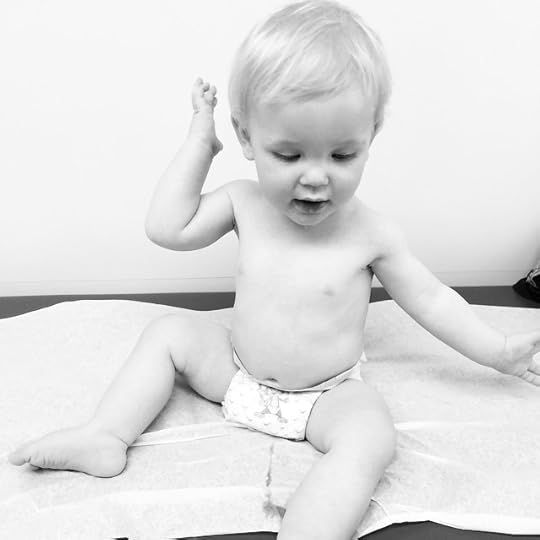
I read a lot about vaccines, trying to make sense of the information on both sides of the issue. The thing that stands out to me—more than any of the facts spouted by either side—is the hate and vitriol coming from both vaccine supporters and those who believe vaccines are harmful.
As much as both sides try to pretend that the issue is black-and-white, the truth is there are no easy answers. It’s a complicated and scary issue. Babies die from preventable diseases, and babies die from vaccines.
But the problem with this topic is that it’s become a battle, with each side defending their ground at all costs, attacking the character of the people who disagree with them, and digging trenches rather than furthering the conversation.
We need to stop assuming that…
…doctors are being bought out by pharmaceutical companies and are ignorant or uncaring (the doctors I know are kind, compassionate and well-informed)
…parents who choose to vaccinate are just blindly following the government or pharmaceutical companies (most of the parents I know have wrestled with this decision)
…parents who choose not to vaccinate are naive or irresponsible (I repeat: most of the parents I know have wrestled with this decision)
…the researchers who develop vaccines are evil (most researchers believe in their work and want to help people)
…the statistics and stories told by either side are unbiased or the only truth (they’re not)
…the natural community has all of the answers (it doesn’t)
…the medical establishment is infallible (it’s not)
…the government has our individual interests at heart (they don’t)
Personally, we vaccinate. We follow a schedule similar to this one, choosing to go more often and get fewer shots at each appointment. We delay vaccinations when anyone is sick. We delay the MMR. We avoid flu vaccines. These decisions—like most things in my life, it seems—put at odds with people on both sides of the issue. So far we haven’t had any problems one way or the other. But I’m keenly aware that we could end up regretting our decision on either end.
But our approach really isn’t the point of the post—and it’s not one I’m willing to debate. The point is that this is a topic wrought with emotional land mines. No one wants to make the wrong decision, and there are a lot of smart people on both sides.
Our current pediatrician is a mother of young children just like me. She’s not just aware of this issue as a pediatrician; she’s aware as a mother. And while, like many pediatric offices, our practice does require patients to be vaccinated to remain under their care, she bends over backwards to work with us on alternative schedules.
When we lived in Maryland, our pediatrician was an older doctor who cared for my sister all through her childhood and is one of the godliest men I’ve ever met. He remains, to this day, one of my favorite preachers, and I’ll never forget how he happily looked at Dylan for us at church on the Saturday night after she was born when she developed jaundice. He’s also a virologist, and he feels strongly about the benefits and importance of vaccines. Do I believe he’s infallible? No, of course not. But I do absolutely believe he’s well informed and that his number one priority is the health and safety of children.
On the other hand, a friend of mine stopped vaccinating after her daughter had a scary reaction to her first DTaP shot. The danger of a repeat reaction for her or one of her other children outweighs the benefits for their family. One can hardly blame her for her feelings.
Honestly, regardless of how I feel about vaccines, I believe parents should have the right to make those decisions for their children. I don’t want the government telling me how to raise my kids, and I think other parents deserve that same respect.
When either side approaches the conversation as if they alone have all of the facts and anyone who disagrees is either stupid or neglectful, the conversation devolves into a hate fest rather than an intelligent, helpful dialogue. There are people out there truly searching for the answers. How about we all try to have a respectful conversation about it instead?
P.S. I’m tempted to turn off the comments on this post before it even goes live. If you want to talk about the need for respectful conversation, I’d love to hear your thoughts. If you want to belittle my choices or the choices of anyone else on either side of this issue…please do that somewhere else.

What I really want to say about vaccines
© 2010-2015 Purple Martin Press, LLC | All rights reserved


 CommentsI definitely believe in vaccines, but I also definitely believe ... by HeatherLaura, that is a really great question. I wish I knew the ... by Mandi @ Life Your WayFlo, I don't disagree with anything you've written. But I also ... by Mandi @ Life Your WayMy response is for Elizabeth, not Andrea! by ShelbyIt makes me sad that Elizabeth cannot drop the judgement and ... by ShelbyPlus 5 more...
CommentsI definitely believe in vaccines, but I also definitely believe ... by HeatherLaura, that is a really great question. I wish I knew the ... by Mandi @ Life Your WayFlo, I don't disagree with anything you've written. But I also ... by Mandi @ Life Your WayMy response is for Elizabeth, not Andrea! by ShelbyIt makes me sad that Elizabeth cannot drop the judgement and ... by ShelbyPlus 5 more...
January 31, 2015
Weekend reading: January 31, 2015

From Instagram: It’s good to be a little sister in this family.
I am so happy that we finally got a good snow. Honestly, I love snow, and I’d love to live somewhere with a short but intense winter. What I can’t handle is when it’s freezing cold with bitter wind…and no snow. That just makes me miserable and grumpy!
Our girls have officially reached the stage where they can all get themselves ready to go outside to play, get undressed when they come in, make their own hot tea, and take their own showers or baths afterward, which has made the last week so much fun for all of us. It also means they’ve gone outside to play multiple times a day since they don’t have to wait for Sean and I to work up enough courage to begin the process. (Which in turn means I’ve already had to wash their snow clothes once because these girls play hard!)
And finally, the next module of the Live course launches tomorrow, and in February we’re talking about love (of course!)—love for yourself as well as other people and what that looks like practically. I hope you’ll join us!
What I’m reading: Quiet by Susan Cain, Fairest (The Lunar Chronicles #4) by Marissa Meyer, Black Beauty by Anna Sewell
What I cooked: easy taco chicken, spaghetti with meat sauce, strombolis (our new favorite lunch!), pesto chicken with crash hot potatoes, breakfast casserole
What I’m thinking about:
{Follow my personal Facebook feed for the things I’m thinking about and talking about all week!}
Make the most of your time How to Prioritize: One Tip That Does It All | Marie Forleo Learning how to tell someone “no.” | Jon Acuff Are You Good at Making Excuses? | The Happiness Project What it takes to be awesome Why You Need to Embrace the Awkward if You Want to Experience the Awesome | Money Saving Mom® Don’t confuse 4 minutes with 4 years. | Jon Acuff Why retirement is highly overrated and we’re not holding out hope for someday | EntreFamily Measurement for real life Cost-per-wear, and its happier alternative | Modern Mrs. Darcy Enough chocolate cake anxiety | Finding JoyHave a great weekend!
P.S. Have you been following this story? It’s amazing!
 Mandi Ehman is the blogger behind Life Your Way. She and her husband have four beautiful girls plus one baby boy, and together they live, work and homeschool on a little slice of heaven in wild, wonderful West Virginia. Mandi loves coffee, chocolate, easy meals, beautiful things and minimalist spaces.
Mandi Ehman is the blogger behind Life Your Way. She and her husband have four beautiful girls plus one baby boy, and together they live, work and homeschool on a little slice of heaven in wild, wonderful West Virginia. Mandi loves coffee, chocolate, easy meals, beautiful things and minimalist spaces. 
Weekend reading: January 31, 2015
© 2010-2015 Purple Martin Press, LLC | All rights reserved


 CommentsWhat are you thinking of Fairest?! I started the audio but ... by Jessica @ Quirky Bookworm
CommentsWhat are you thinking of Fairest?! I started the audio but ... by Jessica @ Quirky Bookworm
January 30, 2015
The month I almost read 20 books {Quick Lit}
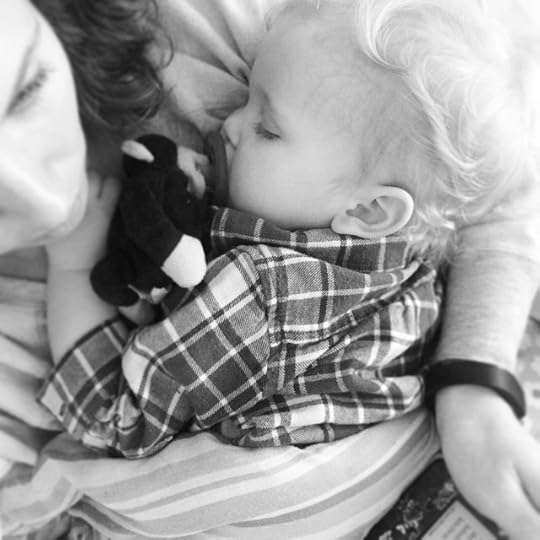
I’m a little late to the party, but one of my blogging goals this year is to actually write book reviews (and not just star ratings!) and regularly participate in the Quick Lit posts with Anne at Modern Mrs. Darcy. This monthly link-up is hosted on the 15th of each month, which I obviously missed for January. I thought about waiting until February 15th for my first post, but I read (or listened to) so many books in January that I was afraid the post would be completely overwhelming by that point. Instead, I’m posting my January quick reads today, and I’ll join in in February with the books I read in the first half of this month.
To be clear, 20 books in a month is not a normal amount of books for me (I may or may not hit 20 by tomorrow depending on whether I finish The 100-Year-Old Man Who Climbed out the Window and Disappeared). In fact, I’m not sure I’ve ever read even close to 20 books in a single month, at least not since I was a kid. This month was an anomaly—ironically enough, on the heels of my decision to lower my goal for 2015 to just 75 books rather than 100. Between Audible and my 3-day retreat, I’ve knocked out enough books that I should still easily hit my goal for the year, even if life gets too busy to make time to read (although my goal is to not let that happen this year!). I also made really good progress on both my Nonfiction and Classics goals for the year, both of which I really enjoy as audiobooks (but more on that in another post).
Nonfiction
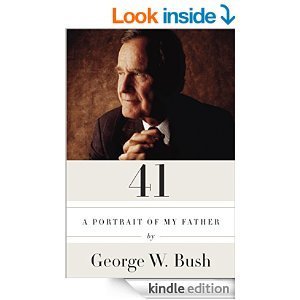
41: A Portrait of My Father by George W. Bush
Even though I identify more as a moderate than a conservative, I’ve always loved George W. Bush. I’m sure some of that has to do with the fact that I was 19 years old on September 11th and I stayed glued to the the TV for weeks afterward, thankful for his leadership and reassurances.
Outside of his politics, though, I loved this book because it is clearly a biography written by a loving son. I appreciated the overview of George H.W. Bush’s life and presidency (which in turn offered an overview of American and world politics over the last almost-century). This book doesn’t pretend to be a balanced commentary, but I wasn’t necessarily looking for one anyway.

The Nazi Officer’s Wife by Edith Hahn Beer
During World War II, Edith Hahn used a false identity to blend into German society despite her Jewish heritage, even marrying a Nazi officer at the height of the war. This is a compelling story about the horrors she and her family experienced during World War II, and while some of the writing is redundant and unrefined, that really doesn’t matter in light of the story itself.
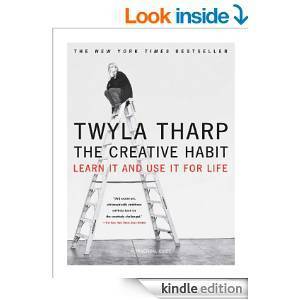
The Creative Habit by Twyla Tharp
Anne recommended this as the #1 book I should read during my retreat, and I’m glad she did. With stories and examples, Twyla Tharp makes the case for making creativity a habit rather than a whim. Although I felt at times like she was overestimating the worth of some of her personal exercises for other creatives, I found it to be a refreshing and inspiring look at creativity as a whole.
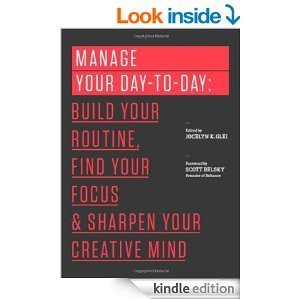
Manage Your Day-to-Day edited by Jocelyn K. Glei
Most of the information in this book wasn’t new for me, as someone who studies productivity and is naturally organized. However, by bringing together dozens of bloggers and experts (many of whom you may recognize, including Seth Godin, Gretchen Rubin and Leo Babauta), Jocelyn Glei has created a handbook of sorts with actionable steps and reminders for all of the things I already knew. Reading this while planning out my daily schedule and 2015 calendar definitely impacted the way I structured my days to prioritize routine, focus, rest and creativity.
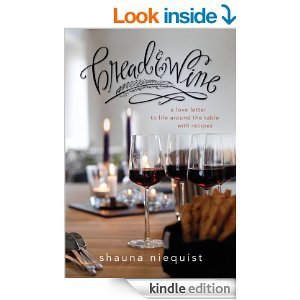
Bread & Wine by Shauna Niequist
Exquisite is the word I use to describe this book. A collection of essays on food, community and life, it’s a beautiful picture of what authentic relationships look like and how food can play a healthy role in community. I was inspired by Shauna Niequist’s words to look at the way I approach friendship and community a little differently, and I want to try every recipe she included in between her thoughts!
{Um, this one was on my favorite books of 2014 list, but I didn’t actually get it done until early January. Oops!}
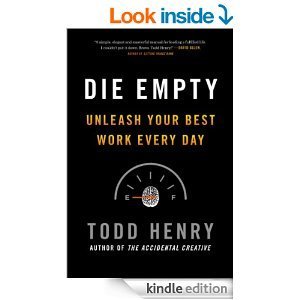
Die Empty by Todd Henry
I read multiple productivity/creativity books this month, and it’s true that most of them repeat similar information just in different ways—which ended up being a good thing for me because I need reminders of things like Warren Buffet’s explanation of the difference between successful and very successful people (hint: they say no to almost everything). However, I found this one to be the most emotionally engaging and practical of the books I read, and it’s one I will refer back to.
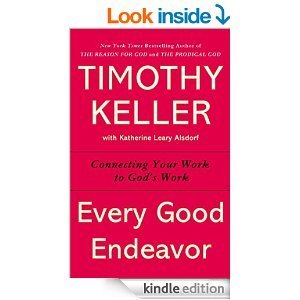
Every Good Endeavor by Timothy Keller
I wanted to love this book, and did I enjoy the first few chapters. The rest, whoever, seemed to me to be a tedious, long-winded version of “work as unto God,” with standard examples of how typical careers can do that but with little for entrepreneurs or out-of-the-box careers.
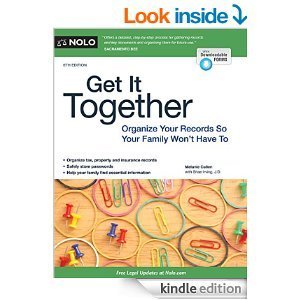
Get It Together by Melanie Cullen and Shae Irving
This is not a fun topic, but 2015 is my year to finally start acting like a grown up, and that means things like estate planning, wills, trusts and organizing all of the information someone (whether it’s Sean, or our parents) might need if one or both of us were to die. Yeah…kind of depressing to think about.
Get It Together is not a guide or template for creating a will or health care directive or other legal document. Instead, it’s an extremely practical and thorough workbook to walk you through putting together a binder containing all of the information someone might need if you die or are incapacitated. I’m confident that if I can just work on the companion planner a little bit each day, I can eliminate much of the stress and frustration that comes with trying to sort out someone’s affairs after they die, whether that’s sooner than I’d like or not for another 50 years!
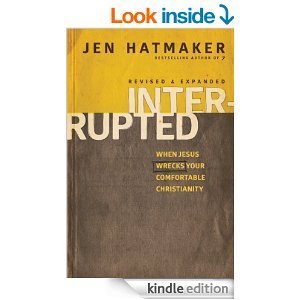
Interrupted by Jen Hatmaker
Sigh. This is hard for me to right because I love Jen Hatmaker’s heart and words so much, but I was really, really disappointed in this book. It’s an important message for sure, but while her humor and sarcasm worked in 7 (a book I loved), it makes this book feel trite and irreverent. It also felt like the revisions and additions were rushed to print, giving the book a disjointed and frenetic feel. I just wanted more from this book. Maybe the fault lies with me for setting my expectations so high.
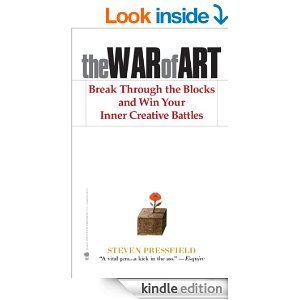
The War of Art by Steven Pressfield
While there’s no denying that Steven Pressfield is a creative genius, I found this book to be a bizarre combination of really sage, applicable advice and off-the-wall commentary on human existence.
Fiction
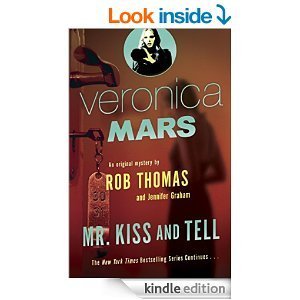
Veronica Mars: Mr. Kiss and Tell by Rob Thomas
I know. Veronica Mars will never be considered high literature…and yet, I love these books. Sean and I watched the TV show faithfully, and I loved the recent movie. My only disappointment was that I couldn’t “hear” the characters as well in this book as I did with the first one, but I have a feeling that has more to do with how recently I had watched the movie last time around and less about the writing itself.
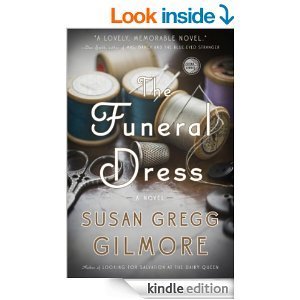
The Funeral Dress: A Novel by Susan Gregg Gilmore
In general, I like books with hope and joy infused throughout them, even when exploring hard topics like the Holocaust or dystopian society. This book was not like that, feeling more like it was written in a grey, hopeless world, and it was a bit depressing to read. That said, it really is a beautiful story, and I would recommend it overall.
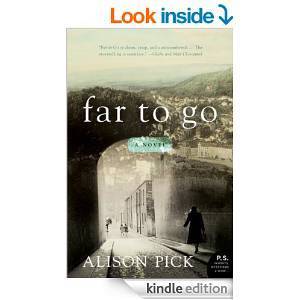
Far to Go: A Novel by Alison Pick
This story is part historical novel, part mystery,with interwoven narratives from the past and present, and I read it all in one day in a race to connect the storylines and solve the mystery. It tells the story of a secular Jewish family and their live-in nanny who are living a prosperous life in Czechoslovakia as Nazi forces take over the Sudetenland. It’s hard to know how to describe this book without giving away the plot, so I will leave it at that, but one thing I really appreciated about this one was the look at the Kindertransport program, which sent nearly 1o,000 children out of Nazi-occupied areas on packed trains to live with families in Great Britain, something I hadn’t read much about before.
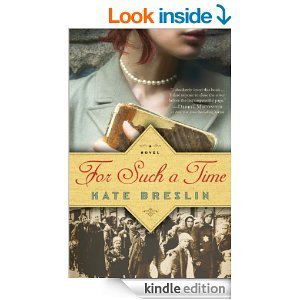
For Such a Time by Kate Breslin
The good: The story itself is hauntingly beautiful, and I was drawn in from the very first page. The bad: It felt like this beautiful book was written and then someone went through and added Christian platitudes to turn a historical novel into an inspirational novel. If I hadn’t been so taken in by the storyline right away, I honestly would have put it down when those started appearing because they felt so contrived and out of place.
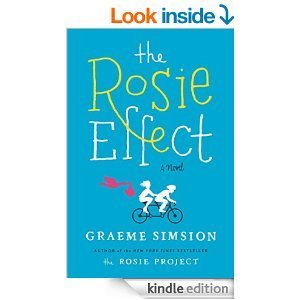
The Rosie Effect by Graeme Simsion
You know how they say the second book in a series often falls flat? I’m afraid this one falls into that category in many ways. Although I still loved Don and Rosie’s characters, much of the book felt contrived and forced (while the first book felt effortless). This may be one of those situations where the first story was so perfect that the author shouldn’t have attempted to extend it further. (Although I did initially give it 4 stars on Goodreads just because of my love for Don Tillman, I recently revised that to 3 stars based on my perspective several weeks later.)
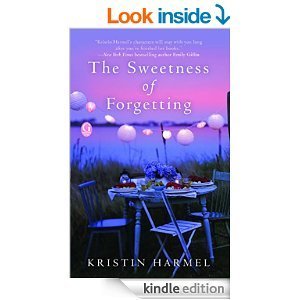
The Sweetness of Forgetting by Kristin Harmel
This book was okay. It kept me reading because I wanted to solve the mystery of the main character’s grandmother’s childhood, but it missed the mark in many ways, trying to weave together too many plot lines and falling flat emotionally on almost all of them.
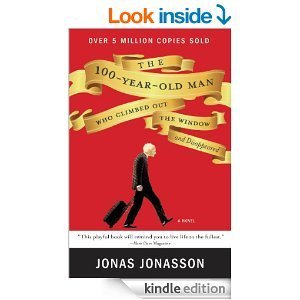
The 100-Year-Old Man Who Climbed Out the Window and Disappeared by Jonas Jonasson
I’ll never forget my grandfather asking my brother and I why we were rooting for the bad guys in the original Fast & Furious, and I kind of feel that way about this book. I’m constantly making excuses for the main character (the 100-year-old man who climbed out the window and disappeared, of course) because he’s just so dang lovable! I may or may not actually finish this in January, but I’m so glad that I chose this as my “book that was originally written in a different language” for the Modern Mrs. Darcy reading challenge, and I’m looking forward to reading The Girl Who Saved the King of Sweden as well.
Classics
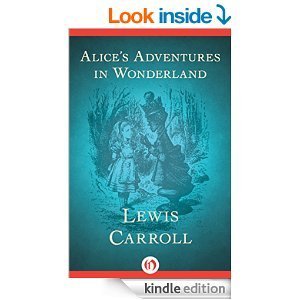
Alice’s Adventures in Wonderland by Lewis Carroll
I had forgotten how much I love this book, with all of its nonsense and hysterical puns. I’ve loved it since we put the play on in junior high—Carroll’s Jabberwocky is also one of my favorites—and I enjoyed every bit of it this time around!

The Secret Garden by Frances Hodgson Burnett
Like Alice’s Adventures in Wonderland, I had forgotten how much I love this story about the little girl nicknamed “Mary, Mary, quite contrary” and her discovery of love, companionship and beauty through the secret garden on her grieving uncle’s estate and her relationships with the people around her.
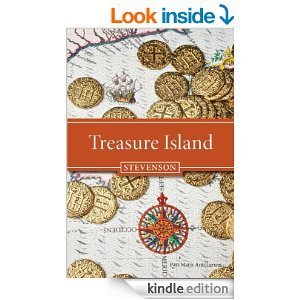
Treasure Island by Robert Louis Stevenson
“Yo-ho-ho and a bottle of rum!” Treasure Island definitely doesn’t fit within any of my “typical” reading genres, but it’s a fun adventure nonetheless, and it’s clear why Robert Louis Stevenson is one of the most widely read authors in the world.
What have you read this month?

The month I almost read 20 books {Quick Lit}
© 2010-2015 Purple Martin Press, LLC | All rights reserved



January 29, 2015
Why we’ve moved from buying used to leasing our vehicles
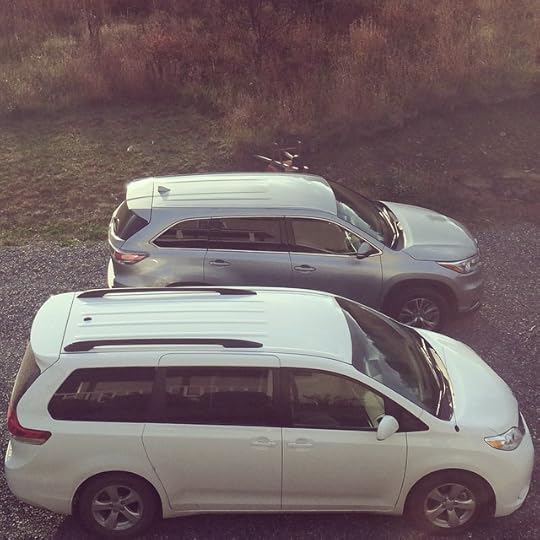
I hinted at this post months ago on Instagram and Facebook, and even got the post mostly written, but in the midst of the 101 Days of Christmas series and holiday travel, I just never got it posted. Three months later, this is the story of how we moved from two older, used vehicles to two brand new leases.
On a sunny Saturday in late August, the 8-year-old, the baby and I hopped in our van after a morning of soccer to make the 5-hour drive to my parents’ new home in North Carolina, where we’d spend a few days helping them unpack.
Three-quarters of the way through the trip, we started smelling a faint mechanical odor, but believing the adage that “you can’t smell your own car,” we pressed on. Then, as we passed a tractor trailer, it felt as if we had suddenly been caught in a wind tunnel. I looked down and, despite using cruise control, our speed had dropped 7 MPH in an instant before returning to normal.
I quickly called my husband and told him what was happening but continued down the road because it just didn’t make any sense. The odor increased, and as we debated what we should do, the cab of the van was suddenly filled with a sound like a freight train.
I pulled over and quickly got the kids out of the car and as far from the road as possible. As smoke continued to pour out from underneath the van, I started unloading our stuff, watching for any sign that the smoke was going to turn into fire.
Luckily, we were less than an hour from my parents’ at that point, and my step-dad was immediately on the road to come pick us up while I made calls to our roadside assistance to get it towed.
As it happens, we had already begun the process of looking for a new vehicle, and when the dealership gave us a quote for replacing the rear differential system on the van—which had completely seized up while I drove—it was obvious to us that it didn’t make sense to sink even more money into this van.
***
For the past 10 years, we have faithfully purchased used cars, citing the facts about the drop in value when you drive a new car off the lot and confident that we were saving money by doing so.
But what our calculations failed to take into account was the cost of maintaining a vehicle when you drive over the mountains (literally up and over several mountains) multiple times a week as well as the cost of fuel in an older car with those less-than-ideal driving conditions.
When we began running the numbers, we were shocked:
The cost of our used vanWe purchased our van four-and-a-half years ago for $14,000 with 82,000 miles. In those four-and-a-half years, we spent more than $3,730 (plus routine maintenance) and put more than 70,000 miles on it (it was our only vehicle for three of those years). To fix the rear differential system would have been another $3,000+, and the a/c compressor was out again. (While a/c is not a necessity, per se, it is a nice thing to have when you regularly drive an hour or more with 5 kids!).
That’s more than $20,000 in the four years we owned it plus another $3,000-4,000 of work needed.
Breakdown of repairs:
shocks $430 water pump/timing belt $700 O2 sensor $300 a/c $800 catalytic converter $1500If we divide the price of the repairs we’ve made to the van out monthly, we’ve spent an average of $70/month.
And that doesn’t even include the gas. The van got an average of 17 miles per gallon, and we spent an average of $100/month for this vehicle, which we drove less often than the truck.
The cost of our used SUVIn the 1 year we owned our SUV, which we bought for $10,500 with 114,000 miles, we spent almost $2,500 in repairs (plus routine maintenance). The rear a/c / heat system was out in that vehicle as well.
Breakdown of repairs:
fuel pump $700 valve $200 shocks $450 engine vibration $75 water pump/timing belt $1,000We financed this vehicle, which meant we also had a $200/month payment. Not only did it get even worse gas mileage, but (and this was clearly a poor decision on our part) it also required premium fuel, which meant we were spending close to $300/month in gas. And while we’d hopefully be done making repairs at some point (a hope which unfortunately can’t be guaranteed), we have spent $210/month in repairs since we’ve owned it.
Comparing that to the cost of our leasesNow, let’s compare that to our leases.
Our total payment for both vehicles is $720/month. That is a lot of money, no doubt, but here’s why we still consider it a better option:
Altogether, the numbers above give us these totals for the used vehicles:
$70 (maintenance per month on old van)
$100 (gas per month on old van)
$200 (truck payment)
$300 (gas per month on old truck)
$210 (maintenance per month on old truck)
$880 (total cost per month to run both vehicles)
That’s just on our monthly expenses; it doesn’t even include the $14,000 we initially paid for the van or the $3-4,000 in repairs it needed just to be drivable. Or the basic maintenance (which is included in each lease for the first two years), which would have been an additional expense of $500-700 for both vehicles over the next three years.
Versus:
$720 (total lease payments)
$170 (gas per month on new vehicles, a number which has dropped even more with the falling gas prices)
$890 (total cost per month to run both vehicles)
The thing missing from this second set of numbers is the peace of mind that comes from knowing exactly how much we’ll be spending on our vehicles each month since they’re now under warranty, plus the time we’ll save in not having to drop off one vehicle or the other at the shop every 5 minutes.
Dollar for dollar, is leasing the best deal long term? Probably not. It’s hard to say whether our vehicles would have continued to need repairs or had reached the point where they would start saving us money. But for us, the savings we can guarantee and the stability of regular payments without unexpected repairs is worth it.
A few final thoughtsNow, I should clarify: we get exceptional pricing for our vehicles because of a family connection. If that weren’t true, we may have chosen less expensive options. (Although the thing with leases is that the price you pay is determined in part by the anticipated value of the vehicle at the end of the lease, and more expensive vehicles tend to hold their value better as well.)
I also know people who have been driving the same used vehicles for much longer than ours without the same level of repairs necessary. I think this comes in part from how hard the drive to and from town is on our vehicles, but some of it, honestly, is just luck. Sean’s mom recently had to spend $5,000 on necessary repairs on the car she’s owned for just over a year, and she just drives her car locally in the suburbs.
I’m not saying leasing is the best option for everybody. I’m sharing this—in the spirit of Life Your Way—because I think it’s important to really evaluate any advice against your own particular circumstances. The benefits of buying used make sense to us, and we bought into that philosophy fully for many years. But living where we do, having the options we have available to us, and looking at the actual numbers, leasing is a better option for our family.
Another thing to consider is that with a lease you pay for any wear and tear beyond what the manufacturer considers reasonable. They do offer protection plans that cover additional wear and tear, but we have chosen to simply be vigilant about cleaning up regularly, avoiding messy food and choosing “safe” parking spots.
Finally, if your goal is to avoid a monthly payment, you can actually purchase your lease upfront! Or you can follow in my friend Shannon’s footsteps and simply keep that money in savings, where it earns interest, and continue to make the monthly payments. Ultimately, my goal is to be able to pay for our next lease in cash. Now that we’re not facing unexpected repair bills every few months, I feel like we might actually be able to get on top of our car savings fund once again.
Much like renting rather than buying a home, where you’re paying for the privilege of not being responsible for the maintenance, leasing offers us the benefit of newer cars that can better handle the mountain roads, get better gas mileage, are under warranty, and can be turned in at the end of the three years before they needs significant repairs.
Have you ever leased?

Why we’ve moved from buying used to leasing our vehicles
© 2010-2015 Purple Martin Press, LLC | All rights reserved



January 28, 2015
How do YOU rate books on Goodreads?
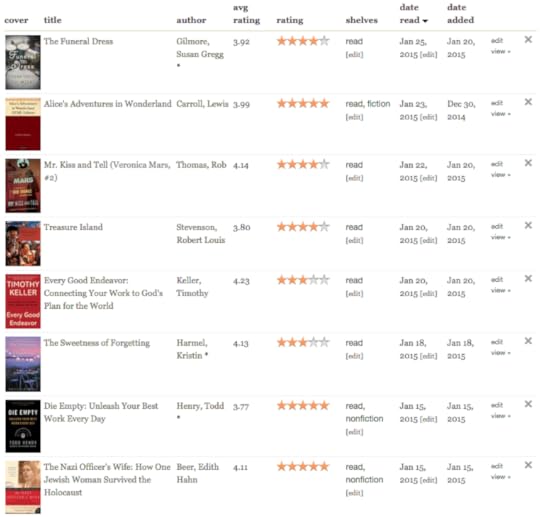
For a long time I avoided rating books on Goodreads.
As I’ve started using it more regularly and connecting with more people, though, I had a couple friends ask me to share my ratings.
My problem was that I had trouble defining what each of those star ratings means to me. When it comes to a physical product on Amazon, I’d never buy something with a rating of 3, but only having access to 4 and 5 stars for books that I enjoyed really didn’t leave much room for nuance.
After some thought and trial-and-error, my rating system has ended up like this:
1 Star: Just horrible. I’m not sure I would even finish a book that rated at 1 star
2 Stars: Really bad. I had to finish it to see where the plot was going, but it was really, really bad. That could mean poor writing, or it could mean a plot that I just really didn’t like. Maze Runner falls into this category for me.
3 Stars: Okay. Not bad, but nothing to write home about either. Many of my “just need to escape with an easy read” books fall in this category.
4 Stars: Good, but not perfect. These are books I really like, but there’s just something holding me back from marking it as a favorite. Either the writing seemed juvenile despite an amazing plot line or there were holes in the plot but the writing made up for it. I would say that this is my most frequently used rating.
5 Stars: Exquisite in every way. Actually, that’s not quite true. Maybe just exquisite overall. I put Shauna Niequist’s Bread and Wine here, even though it felt disjointed at times, because it was just really, really good, stuck with me, and made me want to read all of her books.
In all honesty, I need 3.5 Stars too. I recently wished I had this rating for For Such a Time. In my Goodreads review, I said:
“I wish I could give this book 3.5 stars, but I’m choosing to round up rather than down.
The good: The story itself is hauntingly beautiful, and I was drawn in from the very first page.
The bad: It felt like this beautiful book was written and then someone went through and added Christian platitudes to turn a historical novel into an inspirational novel. If I hadn’t been so taken in by the storyline right away, I honestly would have put it down when those started appearing because they felt so contrived and out of place.”
I’m trying to do better about adding a few sentences with my thoughts as well, but sometimes I have trouble putting those thoughts into words!
That said, I’ve seen star reviews from other people that don’t mesh with their comments according to my rating system, which got me wondering how other people use the stars. Have you defined what each rating means to you? I’d love to hear your system!
P.S. I’d love to connect on Goodreads.

How do YOU rate books on Goodreads?
© 2010-2015 Purple Martin Press, LLC | All rights reserved


 CommentsI've had a Goodreads account for ages but just started actually ... by nurturedmamaI love Goodreads! I struggled often with how to rate, at first, ... by **Dawn**I'm really similar especially the 2 stars. I still finished a 2 ... by AmandaEspiIt is helpful to know how other people decide to rate books. ... by Elizabeth SpenceThis is why I've never gotten into Goodreads. I signed up for ... by ohAmanda
CommentsI've had a Goodreads account for ages but just started actually ... by nurturedmamaI love Goodreads! I struggled often with how to rate, at first, ... by **Dawn**I'm really similar especially the 2 stars. I still finished a 2 ... by AmandaEspiIt is helpful to know how other people decide to rate books. ... by Elizabeth SpenceThis is why I've never gotten into Goodreads. I signed up for ... by ohAmanda
January 27, 2015
On the Whole 30, falling off the wagon and moderation
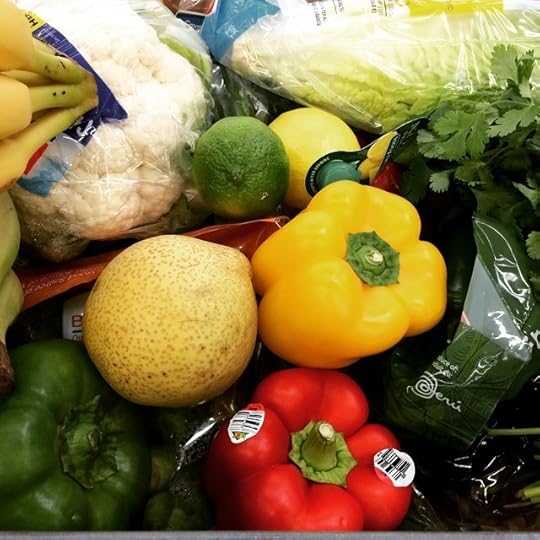
I spent most of the fall planning for a January “reset” via a Whole 30, knowing my body needed to get off the sugar-caffeine-carbs cycle I was on but not quite sure how to do that in the busyness that characterized the last five months of 2014.
To keep myself accountable, I invited a ton of friends (and friends of friends) to join a Facebook group to share recipes, tips, etc.
And then, right before I started my 30 days, I read this post from Paleo Parents, which echoed the same things Shaina and my friend Renay had been saying to me all along. I’d argued with both of them in the past, but the way this post was worded really impacted me this time around.
What I realized is that if I want healthy changes to last, I have to be willing to embrace moderation (something I have convinced myself I’m not any good at) and not just the extremism of a 30-day challenge.

For this reason, I decided to break a few rules along the way:
I started by breaking the “no scale” rule. I know there is a lot of talk right now in general about ignoring the scale and not being obsessed with your weight, but my goal is actually to weigh myself every day in 2015. I have some more thoughts about this to share at another time, but basically it’s less about the particular number on the scale and more about understanding how food and exercise affects my weight—which ultimately reflects my health. When I exercise regularly, I have my dad’s crazy metabolism (at least for now!), which means I can lose—or gain—2-3 pounds from one morning to the next. Understanding how activity, different foods, and habits affect that is an important part of being honest with myself about my eating habits and making lasting changes.
The other thing I did was start allowing myself something like a handful of popcorn from the girls’ bowls, a piece of bread in the Starbucks’ protein box when I was on the road, and a tiny container of ice cream during my personal retreat.
Unfortunately, as I anticipated, these small cheats quickly slid into full out cheating and horrible decision making.
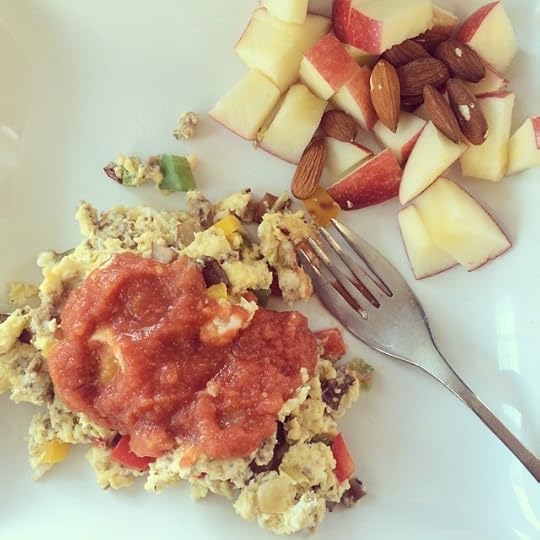
Here’s the thing: I don’t want to eat paleo for the rest of my life. I like cheesecake, I love bread and pasta, and I am a fan of moderation, even if I don’t feel like I’m very good at it. I don’t have health issues that require me to avoid entire food groups (although I do need to limit the amount of dairy I eat, something that breaks my Italian heart). And I want to teach my kids moderation rather than extremism.
But—and this is a big one—I can’t just keep binge eating whatever sounds good at the moment. It’s not good for my body, and as I’ve already seen, my metabolism can’t keep up with it the way I used to. I need to practice putting down food when I’m full or not really enjoying it, not just eating it because it’s there. I need to learn to make dessert a special occasion, not a craving-induced event. I need to make the good parts of the Whole30—veggies for breakfast, lunch and dinner, healthy fats, and so on—a regular part of my diet.
The problem with my personality is that I gravitate toward both extremism and perfectionism, which means it’s all too easy for me to fall off a wagon and then head out on my own journey rather than trying to climb back on.
This time, I’m trying a different approach. I’m reminding myself often that I have a chance to make a new decision with each and every meal. I’m practicing saying no to a second cookie even when I allow myself one. I’m looking for easy recipes and ideas for incorporating veggies into our meals. And I’m reminding myself that I really do like eggs and veggies for breakfast, even when french toast sounds more appealing!

On the Whole 30, falling off the wagon and moderation
© 2010-2015 Purple Martin Press, LLC | All rights reserved


 CommentsI am with you on this. I've completed Whole 30 w/o a single ... by kimberlyOh, yep; I didn't mean to imply figuring it out in direct ... by Mandi @ Life Your WayPlease just keep in mind that it is NORMAL for weight to ... by Sherry
CommentsI am with you on this. I've completed Whole 30 w/o a single ... by kimberlyOh, yep; I didn't mean to imply figuring it out in direct ... by Mandi @ Life Your WayPlease just keep in mind that it is NORMAL for weight to ... by Sherry
January 26, 2015
Remember, Classical Conversations is just ONE option
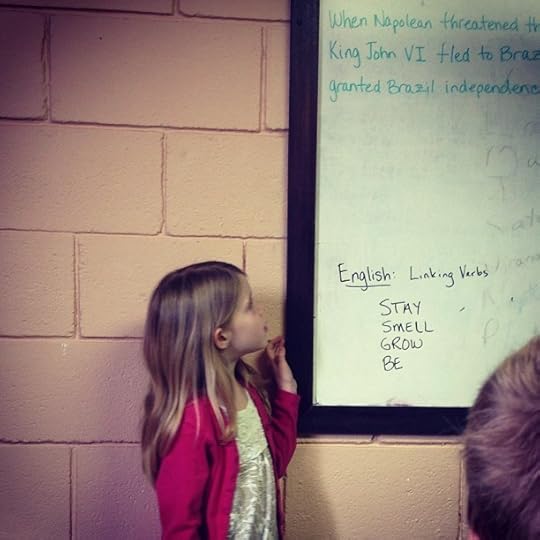
I’m going to say something that might upset a lot of people.
First, let me say upfront that our family loves Classical Conversations. We may not do everything by the book, but as hokey as it sounds, I often say that when I went to my first informational meeting, the things I heard resonated in my soul. I just knew it was the right fit for our family, and we plan to stick with Classical Conversations through all of the Challenge levels for all five of our kids. Basically, it is our curriculum of choice, and one we’re very happy with.
But here’s the thing…it is just that: a curriculum choice. Classical Conversations is a curriculum company, and the combination of a curriculum and community is an amazing thing—not just for the benefits the model offers homeschoolers but also as a marketing tool. And make no mistake, the CC team includes master marketers who know exactly what they’re doing. That’s one of the reasons why it’s one of the fastest growing homeschooling companies right now.
And, honestly, as an entrepreneur myself, I don’t think there’s anything wrong with that. We’re budgeting to pay for Challenge—which will cost us upwards of $7,000 a year, not including books and supplies, when all four of our girls are in the program—and we’re willing to do that because we believe in the approach and the benefits of the program. (And, yes, I know that’s much less expensive than private school…but we’ve always planned to homeschool, not send our kids to private school, so that comparison isn’t really relevant for us!)
However, I’m part of the Classical Conversations group on Facebook, and whenever someone mentions that they’re concerned about the cost for their family’s budget or wondering about the time commitment, people respond in an almost cult-like manner, almost putting a guilt trip on the original poster for not prioritizing the cost or telling them that they simply won’t be able to offer the same quality on their own at home.
If someone says the program isn’t working for a particular child, they’re told to trust the system and make it work.
But, y’all, CC is just a curriculum (a curriculum created by human beings, just in case there was any confusion), and it’s not going to work for everybody.
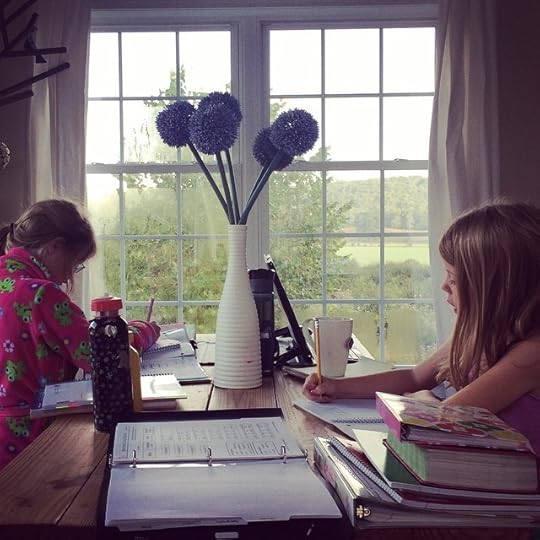
Our family has very happily struck a balance of doing Foundations at home (or, truthfully, in the car on our way to Essentials each week) and then doing Essentials with our community. Giving up one morning a week for Foundations was putting so much stress on our schedule, and the cost (both time and money) was not working for us. Reserving a fifth weekday morning at home and then heading out in the afternoon for Essentials (which I tutor and love) has been such a huge blessing for our family that I chime in every time someone asks about doing Foundations at home to let them know that you can make it work and that some of us even enjoy doing it that way.
We need to be honest about the downsides—like the constant “upgrades” to the curriculum (which can get expensive), the annual cost (especially for larger families), the time commitment (which is a lot for families with working parents or busy schedules), and so on. It is a great fit for many, many families, and many other families use parts of it to create their own program. But let’s not make it an idol in our lives that ignores the unique situations of various families and children.
Even for classical Christian homeschoolers, CC is not the end-all, be-all of curriculum, and when we treat other choices as inferior rather than just different, I think we’re actually hurting the company’s reputation, not helping it.
(And I think it goes without saying that this is true for every curriculum and educational philosophy…)

Remember, Classical Conversations is just ONE option
© 2010-2015 Purple Martin Press, LLC | All rights reserved



January 24, 2015
Weekend reading: January 24, 2014
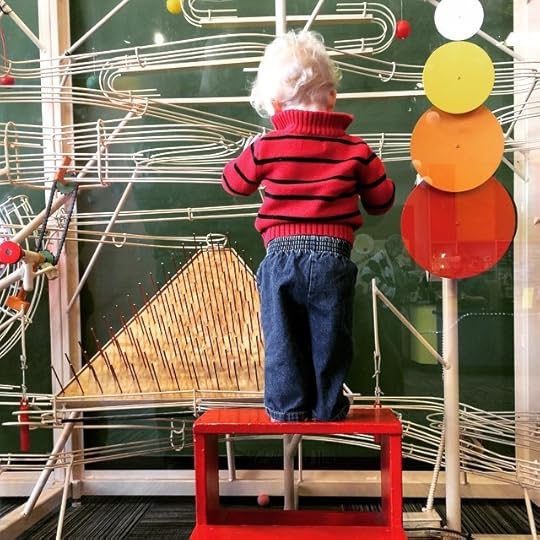
From Instagram: Exploring.
Last week we finally finished celebrating Christmas (although our decorations are still up…), with a trip to our local children’s museum to with my dad and his wife. Their Christmas gift this year included an annual membership to the museum for our family, and the kids had so much fun exploring all it has to offer.
I’m looking forward to heading back regularly for scheduled events, to meet the new artists-in-residence, and to just play and explore (especially on a weekday when lots of kids are in school!). And I’m really excited about the reciprocal memberships in the Association of Children’s Museums and Association of Science-Technology Centers so that we can explore other museums for free or at a discount as well!
What I’m reading: Interrupted by Jen Hatmaker, The Funeral Dress by Susan Gregg Gilmore, Alice’s Adventures in Wonderland by Lewis Carroll
What I cooked: shrimp scampi zoodles, pizza, apple pancakes (just add shredded apple, cinnamon and double the eggs in your regular pancake recipe!)
What I’m thinking about:
{Follow my personal Facebook feed for the things I’m thinking about and talking about all week!}
All about simplifying Developing the Habit of Simple Living | Andrea Dekker The Possibility in Blank Spaces | Becoming Minimalist Simplify Your Life in 5 Minutes a Day | Greg McKeown In Praise of Limits | zen habits Organizing Kids’ Spaces: Color Coding | Simple Kids Let Go of These 10 Items to Jumpstart Decluttering | Becoming Minimalist On Breaking | Nesting PlaceHave a great weekend!
P.S. Have you gotten your Ultimate DIY Bundle? It’s only available until Monday, so don’t wait!
 Mandi Ehman is the blogger behind Life Your Way. She and her husband have four beautiful girls plus one baby boy, and together they live, work and homeschool on a little slice of heaven in wild, wonderful West Virginia. Mandi loves coffee, chocolate, easy meals, beautiful things and minimalist spaces.
Mandi Ehman is the blogger behind Life Your Way. She and her husband have four beautiful girls plus one baby boy, and together they live, work and homeschool on a little slice of heaven in wild, wonderful West Virginia. Mandi loves coffee, chocolate, easy meals, beautiful things and minimalist spaces. 
Weekend reading: January 24, 2014
© 2010-2015 Purple Martin Press, LLC | All rights reserved







